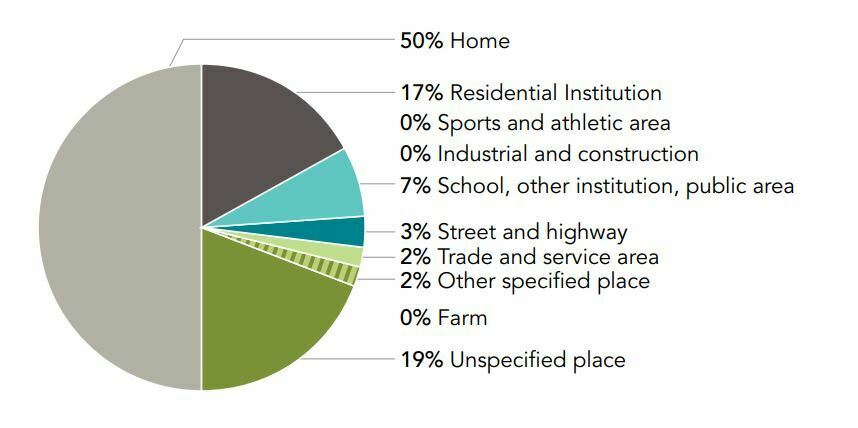The Ultimate Guide 2023: Choosing the Right Medical Alert System for Your Loved Ones in Canada
Ensuring the safety and well-being of our loved ones is a top priority for all of us. When it comes to the health and safety of our ageing relatives or family members with medical conditions, we want to provide them with the best possible care and support. That’s where the Medical Alert System come into play. These innovative devices have revolutionized the way we protect and assist our loved ones in times of emergencies. However, with so many options available in the market, choosing the right medical alert system can be an overwhelming task.
That’s why we have created the ultimate guide to help you navigate through the sea of choices and make an informed decision. In this comprehensive guide, we will explore the key features, benefits, and considerations to keep in mind when selecting a medical alert system. From advanced monitoring capabilities to user-friendly designs, we will cover everything you need to know to ensure the safety and peace of mind of your loved ones. So, let’s dive in and discover the perfect medical alert system for your family’s unique needs.
Understanding the Importance of a Medical Alert System:
When it comes to the health and safety of our loved ones, being prepared for emergencies is crucial. A medical alert system is a device that allows individuals to call for help in case of an emergency, such as a fall or a medical episode. These devices are designed to provide immediate assistance, ensuring that help is just a button press away. With a medical alert system, your loved one can feel confident and secure knowing that help is always within reach.
Medical alert systems are especially essential for seniors and individuals with medical conditions. As people age, their risk of falling or experiencing health emergencies increases. Falls are one of the leading causes of injuries among older adults. With a medical alert system, seniors can maintain their independence while having the peace of mind that help is readily available if needed.
Moreover, medical alert systems are not limited to emergencies. They can also be used to request assistance for non-emergency situations, such as feeling unwell or needing help with daily tasks. These systems provide a sense of security and enable individuals to live their lives to the fullest, knowing that help is just a button press away.
In the next section, we will explore the different types of medical alert systems available and their respective features and benefits.
Different Types of Medical Alert Systems Available
When it comes to choosing a medical alert system, it’s important to understand the different types available in the market. Each type offers unique features and benefits, catering to specific needs and preferences. Here are the three main types of medical alert system:
- In-Home Medical Alert Systems:
As the name suggests, these systems are designed for use within the confines of the home. They typically consist of a base unit connected to a landline or cellular network and a wearable pendant or bracelet with an emergency button. In-home medical alert systems are ideal for individuals who spend most of their time at home and want to ensure immediate help is available in case of an emergency.
2. Mobile Medical Alert Systems:
Mobile medical alert systems, also known as on-the-go or portable alert systems, provide the flexibility to use the device both inside and outside the home. These systems utilize cellular networks to connect with emergency monitoring centres, allowing individuals to access help wherever they go. Mobile medical alert systems are perfect for active seniors who enjoy outdoor activities or individuals who require constant access to emergency assistance outside of their homes.


Factors to Consider When Choosing a Medical Alert System
Choosing the right medical alert system is a crucial decision that requires careful consideration of various factors. To ensure the system meets your loved one’s needs and preferences, here are the key factors to consider:
- Reliability and Range: One of the most critical factors to consider is the reliability of the medical alert system. It should have a wide range that covers the entire living space, ensuring that your loved one can call for help from anywhere within the home. Additionally, the system should have reliable connectivity, whether through a landline, or cellular network.
- Ease of Use: The medical alert system should be user-friendly and easy to operate, especially for individuals who may have limited mobility or cognitive impairments. Look for systems with large buttons, clear instructions, and straightforward setup processes.
- Monitoring Services: Consider the type of monitoring services offered by the medical alert system provider. Some systems provide 24/7 professional monitoring, where emergency calls are answered by trained operators who can dispatch help when needed.
- Fall Detection: Falls are a common risk for seniors and individuals with certain medical conditions. Look for a medical alert system that offers fall detection technology, which automatically detects falls and sends an alert to the monitoring centre or designated contacts.
- Battery Life and Backup: Ensure that the medical alert system has a long battery life to minimize the need for frequent recharging. Additionally, check if the system has backup power options in case of power outages, such as a backup battery or a generator.
- Waterproof and Durability: Consider the durability and waterproof capabilities of the Alert system, especially if your loved one enjoys water activities or has a history of accidental spills. Look for systems that can withstand water exposure, such as showerproof or waterproof pendants or bracelets.
- Cost and Pricing Plans: Evaluate the cost of the medical alert system, including any upfront fees, monthly subscription charges, and additional features. Compare pricing plans from different providers to find the most cost-effective option that offers the desired features.
By considering these factors, you can narrow down your options and select a medical alert system that best suits your loved one’s unique needs. In the next section, we will explore the essential features to look for when choosing a medical alert system.
Features to Look for in a Medical Alert System:
When choosing a medical alert system, it’s essential to assess the features and functionalities that will best serve your loved one’s needs. Here are some key features to consider:
- Two-Way Communication: Look for a medical alert device that allows for two-way communication between the user and the monitoring centre or designated contacts. This feature enables clear communication during emergencies, ensuring that help is dispatched appropriately.
- Medication Reminders: Some medical alert systems offer medication reminder features, which can be especially beneficial for individuals who need assistance with medication management. These systems provide audible reminders and notifications to ensure medication adherence.
- Integration with Smart Home Devices: If your loved one already utilizes smart home devices, consider a medical alert system that integrates with these devices. Integration allows for seamless control and monitoring, enhancing the overall safety and accessibility of the home environment.
- Activity Monitoring: Certain medical alert devices offer activity monitoring features, which can provide insights into your loved one’s daily routines and detect any unusual patterns or changes. This feature can be beneficial for identifying potential health issues or emergencies.
- Emergency Contacts and Protocols: Ensure that the medical alert system allows you to input multiple emergency contacts and specify the escalation protocols for different types of emergencies. This ensures that the appropriate contacts are notified based on the severity of the situation.
By considering these features, you can choose a medical alert device that offers the necessary functionalities to meet your loved one’s specific needs. In the next section, we will compare popular medical alert system brands to help you make an informed decision.
Reviews and Testimonials from Users:
Reading reviews and testimonials from actual users can provide valuable insights into the effectiveness and reliability of different medical alert systems. Here are some reviews and testimonials from users of popular medical alert system brands:
WOULD NEVER RECOMMEND LIFE-ALERT SAULT STE MARIE!!!
These reviews and testimonials provide real-life experiences and can help you gauge the quality and effectiveness of different medical alert systems. However, it’s important to remember that individual experiences may vary, and it’s always advisable to conduct thorough research before making a decision.
In the next section, we will discuss pricing and subscription options for medical alert systems to help you find the most suitable plan for your loved one’s needs.
Pricing and Subscription Options:
Understanding the pricing and subscription options for medical alert systems is crucial to ensure that you choose a plan that aligns with your budget and requirements. Here are some key points to consider:
- Upfront Costs: Some medical alert device providers may require upfront payments for the equipment or activation fees. Be sure to inquire about any additional costs beyond the monthly subscription fee.
- Monthly Subscription: Most medical alert devices operate on a monthly subscription basis. Compare the pricing plans from different providers, taking into account the features included in each plan. Consider whether the plan offers the necessary features and monitoring services within your budget.
- Contract Length: Determine whether the medical alert devices require a long-term contract or if they operate on a month-to-month basis. It’s advisable to opt for systems with flexible contracts, allowing you to make changes or cancel the service if needed.
- Additional Costs: Inquire about any additional costs that may be associated with the medical alert system, such as equipment upgrades, battery replacements, or shipping fees. Understanding these potential costs upfront will help you avoid any surprises down the line.
Remember to carefully review the pricing and subscription options from different providers to find the most cost-effective plan that meets your loved one’s needs. In the following section, we will discuss the setup and usage of a medical alert system.
Setting Up and Using a Medical Alert System:
Setting up and using a medical alert system is generally straightforward and user-friendly. Here are the general steps involved in the setup process:
- Choose a Location: Determine the best location for the base unit of an in-home medical alert system. It should be easily accessible and within range of the wearable pendant or bracelet.
- Connect the Base Unit: Follow the instructions provided by the medical alert system provider to connect the base unit to a landline or cellular network. Ensure that the unit is properly powered and functioning.
- Wear the Pendant or Bracelet: Put on the wearable pendant or bracelet that comes with the medical alert system. Ensure that it fits comfortably and securely.
- Test the System: Test the system by pressing the emergency button on the wearable device. This will initiate a call with the monitoring centre or designated contacts to ensure that the system is working correctly.
Using a medical alert system is as simple as pressing the emergency button in case of an emergency or when assistance is needed. The monitoring centre or designated contacts will then be notified, and appropriate help will be dispatched.
In the next section, we will discuss additional safety measures to consider in conjunction with a medical alert system.
Additional Safety Measures to Consider
While a medical alert system provides an essential safety net, incorporating additional safety measures can further enhance the well-being and security of your loved ones. Here are some additional safety measures to consider:
- Home Safety Modifications: Assess the home environment for any potential hazards or obstacles that could increase the risk of falls or accidents. Implement safety modifications such as installing grab bars, improving lighting, and removing clutter.
- Medication Management Systems: If your loved one requires assistance with medication management, consider using medication management systems, such as pill organizers or automated dispensers. These systems can help ensure medication adherence and prevent medication.
More From our Library
The Complex Connection: How Does Mental Health Affect Identity?
Cold Winter Challenge: Safeguarding Seniors and Disabled Individuals in Canada 2024
The Emotional Impact of Best Senior Emergency Alert System
Reducing the Fear of Falling for Seniors: A Comprehensive Guide
Navigating the Challenges of Dementia Care: Senior Caregiving Tips and Strategies
Balancing Self-Care For Caregivers: Tips for Caregivers
Contact Us
Our team is ready and available to help you find the right solution. Fill out the form to receive a callback or contact us:










































